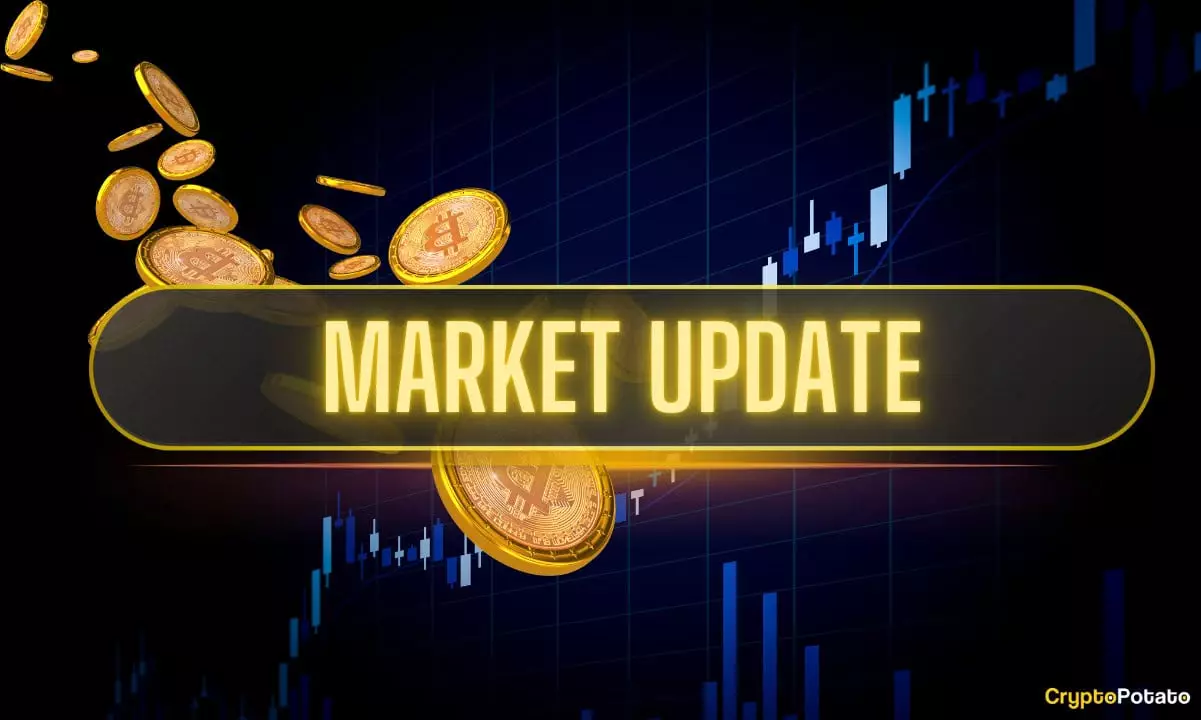In an unprecedented upheaval, President Donald Trump’s recent trade initiatives have set off shockwaves through the cryptocurrency landscape. This isn’t merely another political maneuver; it’s a calculated disruption that has thrown the financial world into a tizzy. By imposing sweeping taxes on imports, which varied significantly from country to country, the result has been a conspicuous rollercoaster ride for Bitcoin and other cryptocurrencies. The overall market is now grappling with increasing uncertainty and price volatility, raising questions about the relationship between governmental influence and the ever-growing digital asset sector.
Now imagine this: last week saw the rollout of what Trump termed ‘Liberation Day’—an ironic title given the chaos that ensued. With taxes set at a minimum of 10% and tariffs spiking as high as 125% on China, one would expect Bitcoin to maintain a sturdy position as a rebel asset against fiat instability. Instead, Bitcoin’s value plummeted alarmingly to a five-month low of over $74,000. While many crypto enthusiasts cling to the belief in Bitcoin as a hedge against traditional financial fluctuations, it appears that political turmoil has invoked enough fear to prompt a sell-off.
The Aftermath of a Volatile Weekend
The weekend trading sessions belied the preceding tumult, with Bitcoin oscillating between $82,000 and $84,000—a momentary pause that many hoped would harness renewed momentum. Yet, Sunday proved that the trends established during the week were impervious to recovery, and a steep decline began almost immediately. What is particularly disturbing about this trend is the reliance on external factors—such as Trump’s tweets or policy shifts—that are sending cryptocurrencies spiraling downwards.
The markets often react almost like clockwork to political instability; this means that traders need to possess a heightened degree of vigilance. When Trump’s administration threatened to pull tariffs on other countries while raising them sharply against China, Bitcoin exhibited erratic behavior as it adapted to the new landscape. It jumped above $83,000 briefly but has stabilized close to $82,000, signifying the market’s struggle to regain footing amidst external pressures.
The Ripple Effect on Altcoins
While Bitcoin remains the flagship of the crypto fleet, its performance is symptomatic of larger market trends. Ethereum, the second-largest cryptocurrency, has faced unprecedented pressure, crashing down to $1,400—a staggering loss that annihilated seven years of gains. This isn’t just a Bitcoin story; it highlights a system on edge. XRP, DOGE, and ADA haven’t fared well either, indicating that this crisis extends far beyond Bitcoin alone. Traditional altcoins have shown significant, often troubling, losses, contributing to a growing sentiment of despair among long-term investors.
Remarkably, despite the meltdowns, some lesser-known assets like PI and OKB are breaking through the noise, posting notable gains. This brings up an important observation: Not all cryptocurrencies are feeling the brunt of political fallout. The blockchain ecosystem is vast, and while high-profile currencies may suffer, niche players seem to be thriving, presenting an interesting dichotomy as investors ponder their next moves.
A Silver Lining? Potential for Rebound
Amid the chaos, an intriguing prediction stands out: some analysts are suggesting that a recovery could be on the horizon, particularly for Ethereum. Despite the brutal performance against Bitcoin, experts emphasize that markets are cyclical, and there is room for resurgence, especially with anticipated legal resolutions for Ripple and the SEC. Settlements could signal stability, fostering a renewed investment climate that might reignite enthusiasm across the digital asset board.
On the horizon are predictions from influential figures like Charles Hoskinson, who foresee Bitcoin soaring to unprecedented heights, potentially reaching $250,000 by the end of 2025. Contradictory to present volatility, such optimistic forecasts spark a blend of hope and skepticism. Are we witnessing just a dip, or are we at the precipice of a long, dark winter for cryptocurrencies?
The Role of Central Banks
The unease in the markets leads to a profound question: what role will central banks play in this tumultuous saga? Arthur Hayes, co-founder of BitMEX, proposes that either the Federal Reserve or China’s PBOC could be the catalysts for a new Bitcoin boom. If central financial institutions feel the drive to intervene during this economic turbulence, their actions could very well dictate the pathways for Bitcoin and its counterparts.
The intertwining of politics and financial markets in recent times not only complicates investor readings but also plays a dangerous game with public sentiment regarding cryptocurrencies. With every move made by world leaders, the future of Bitcoin and its allies hangs in a delicate balance, leaving all players in this market questioning their next move. The reality is clear: the political arena needs to stabilize for the crypto markets to mend their frayed edges. Each day that passes without predictable policies leads traders further into a pit of uncertainty and speculation. The stakes couldn’t be higher.

